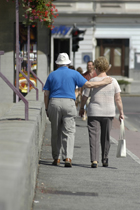Researchers at The Pennsylvania State University recently identified differences in heat stress vulnerability between different age groups and genders. The research, published in the American Journal of Physiology, examined 72 men and women aged 40 to 92.
The study found that older women had greater susceptibility to heat-related stress than both middle-aged women and older men. In both humid and dry hot environments, women over 65 struggled to maintain a stable core temperature at lower heat thresholds. (The group of middle-aged men, aged 40 to 64 years old, was small and excluded from subsequent between-group comparisons.)
Researchers discovered that sex accounted for 12% of the variability in critical environmental limits in humid conditions and 15% in hot, dry conditions for adults over 40. This finding suggests that being female is associated with increased heat vulnerability, independent of other factors such as age and metabolic rate.
The study’s results align with epidemiological data from recent heat waves, which have shown a higher burden of heat-related mortality among older women. Importantly, the research indicates that the decline in heat tolerance associated with aging may begin earlier in women than in men.
These findings have potential implications for public health strategies during extreme heat events, particularly for the protection of older adults. The researchers emphasize that their work confirms a true sex difference in heat vulnerability among older adults, rather than simply reflecting population demographics.
While the study provides valuable insights into heat stress vulnerability in older populations, the researchers note that further work is needed to define the specific physiological mechanisms underlying these sex-based differences in heat tolerance among older adults.




